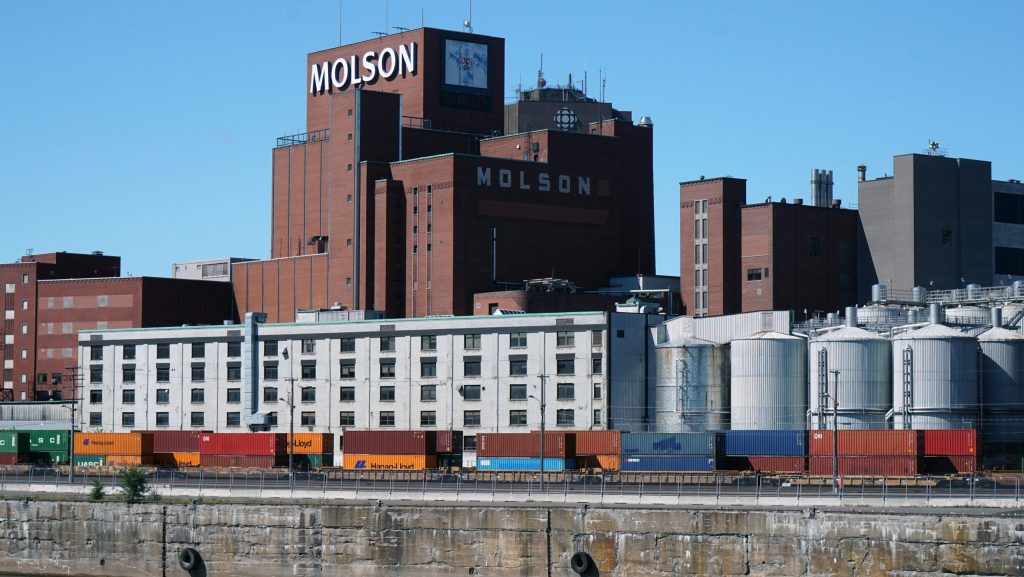Quebec population sees largest growth in 50 years, boosted by immigration
Posted May 24, 2023 2:46 pm.
Last Updated May 24, 2023 11:17 pm.
In 2022, the population of Quebec experienced its strongest annual growth in the last 50 years, thanks to immigration. But the relative growth was the lowest of all the Canadian provinces, indicates the Institut de la statistique du Québec (ISQ).
The demographic report of Quebec for 2022, published Wednesday, reveals that on Jan. 1, the population of Quebec was estimated at 8.8 million people, up by 149,900 people during the year 2022. According to the ISQ, this population growth, after the significant slowdown caused by the COVID-19 pandemic, is based on an increase in permanent and temporary immigration.
Because while immigration has increased, births have decreased and deaths have experienced “a significant increase” in Quebec in 2022. “Natural increase” thus falls “to a particularly low level,” notes the ISQ.
In the end, the growth rate in Quebec is 1.7 per cent, compared to three per cent in the rest of Canada. The demographic weight of Quebec in the federation as a whole thus decreases again slightly, from 22.4 per cent to 22.2 per cent, underlines the ISQ.
Quebec is facing a loss of 3,100 people from interprovincial migration, meaning more people are moving out of Quebec to live in other provinces. In turn, Quebec has the lowest growth rate relative to the rest of Canada.
“This year, it’s pretty exceptional that we’ve seen the Atlantic region provinces having such a high level of internal international migration. And they also post a very high level of interprovincial migration, which is usually a negative in the region,” said Frédéric Fleury-Payeur, senior demographer with ISQ
In terms of immigration, Quebec welcomed 68,700 permanent immigrants in 2022, “a peak partly fueled by a catch-up after the drop in admissions caused by the pandemic”, indicates the ISQ. It is non-permanent residents who once again became the main source of migratory increase in 2022, as they had been in 2019.
“There was a very high level of permanent immigration, including some catching up from the pandemic year of 2020 and 2021 because of the delays in candidacy at the Immigration Canada,” explained Fleury-Payeur. “And also because of border closure, it was supposed to be adjusted in 2021, but now it is in the way in 2022.”
The strong pre-pandemic growth of non-permanent residents (temporary workers, foreign students and asylum seekers) had been curbed in 2020 and 2021 due to COVID-19, but their estimated number increased by 86,700 in 2022, “a balance record” which brings their total workforce to around 346,000 people.
RELATED: Increasing Canada’s population through immigration is a threat to Quebec, says Legault
According to the ISQ, Quebec is the place of residence of 57 per cent of asylum seekers present in Canada, 16 per cent of temporary workers and 12 per cent of foreign students. Moreover, the proportion of permanent and temporary immigrants residing outside the Montreal metropolitan area is tending to increase.
Fleury-Payeur says current immigration policies are what’s facilitating the influx of international immigrants in the province. For some companies, the cap for temporary foreign workers doubled at 20 percent last year. The demographer also believes paperwork has simplified.
Immigration lawyer Ho Sung Kim disagrees.
“I wouldn’t say it’s getting easier in terms of paperwork to get the visa, or the permits required to come to Canada. If we compare it to ten years ago or 20 years ago, it’s definitely more complex than ever,” said Kim.
“Let’s say, to study in Quebec or anywhere. You first need to do the application for CAQ, which is the Québec Acceptance Certificate. So we have a Quebec procedure first. Once we have that CAQ, you then have to apply for a study permit with Immigration Canada.
“So basically you have to two steps. And for students, there are a number of the requirements that you have to meet. First, you have to show the authenticity of your studies. Students also have to prove that they have enough money to pay tuition, international tuition fees, and the living costs as well,” Kim continued.
“So they have to come up with proof in terms of financial sufficiency. If we compare it to 10 years ago or 20 years ago, it’s definitely more complex than ever.”
The number of births has decreased by five per cent compared to 2021 and according to the ISQ, we have to go back to 2005 to find a lower number. The fertility index now stands at 1.49 children per woman, dropping for the first time in 20 years below the 1.5 child mark. The average age at childbearing continues to increase in Quebec, to stand at 31.1 years.
In contrast, the number of deaths increased by 12 per cent in 2022, an “exceptional increase” which can be associated with various factors, according to the ISQ, including the pandemic and the resumption of circulation of other respiratory viruses.
This increase takes nine months off life expectancy in Quebec, which had nevertheless returned to its pre-pandemic level in 2021, after a difficult year with COVID-19. Life expectancy is instead returning to 2020 levels – 84.1 years for women and 80.5 years for men.
—This report by La Presse Canadienne was first published in French and translated by CityNews








